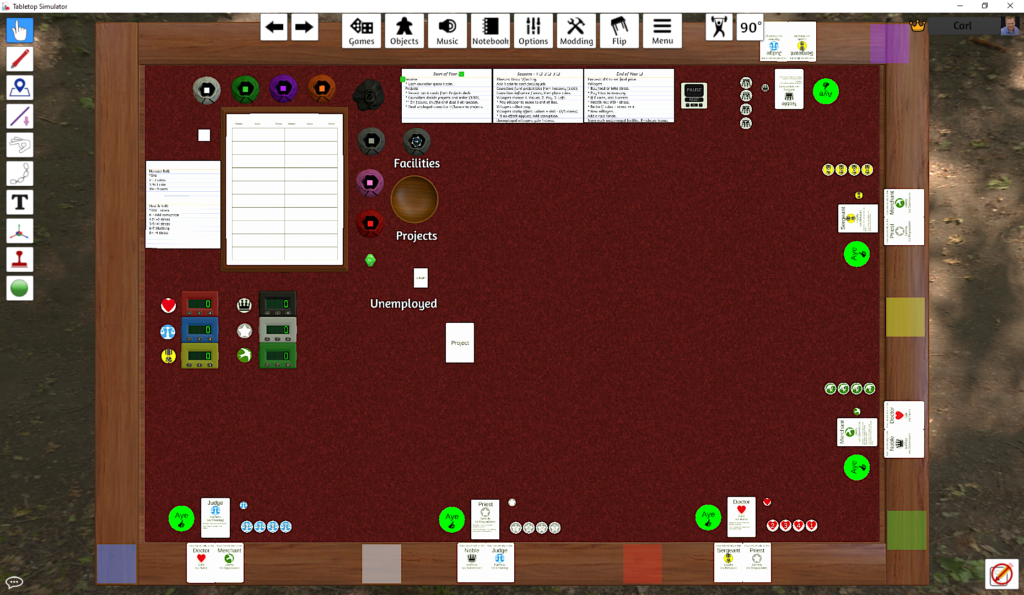I’m struggling with how to process the changes to each villager’s life at the end of the year. I’ve tentatively added a support mechanism, and checks against the village’s moral values. I still think life event cards are a very interesting idea, but they seem like they would add such variability that I should get the basic mechanisms in place first. (Similar to how there’s no event deck yet for the entire village, even though that’s also something I think is important.)
I think a lot of my uncertainty comes to not having tested the buildings. They’re the core mechanism of the game, and I need to make sure that they are on the right track before I try changing a lot more things. Problem is that it takes almost two years of play before the buildings can start having any effect. I guess I should start some playtests at year 3, with random buildings in play, to see what happens.

